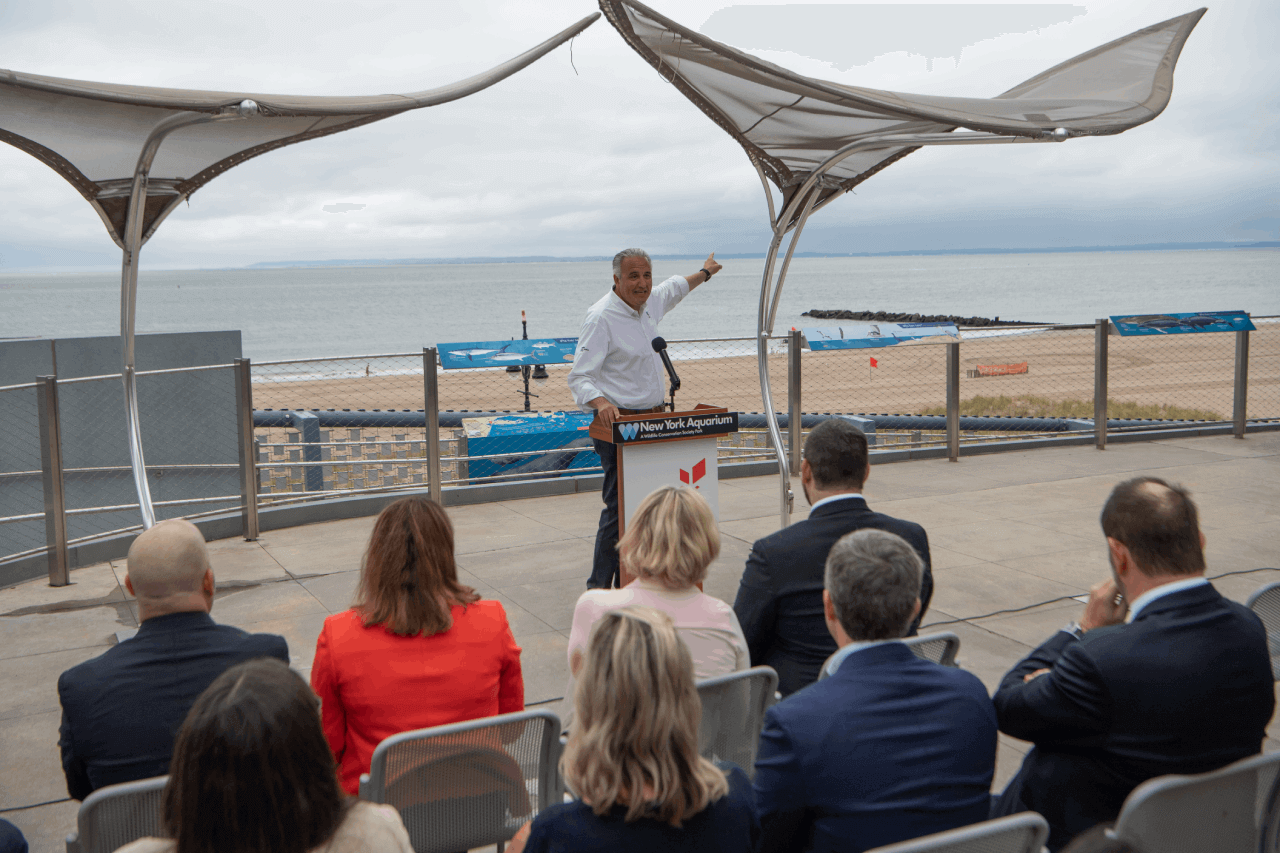On Sept. 7, the Wildlife Conservation Society (WCS) and Empire Wind announced the extension of their agreement to monitor large whales in the lease area of Empire Wind—an offshore wind project located in the New York Bight off the southern coast of Long Island—from 2022 to 2028. The new agreement ensures that important data to protect wildlife in the New York Bight will be collected during the pre-construction, construction, and post-construction phases of the wind project.
Two acoustic monitoring buoys were deployed in the New York Bight (within Empire Wind’s lease area) in 2016 and 2019 as part of a broad effort to generate key data prior to construction of the Empire Wind project. Data collected over the next six years will continue to result in considerable new knowledge on whale occurrence and behavior in and around the Empire Wind lease area.
“We know there are at least three, if not four, seasonally-present endangered species and up to 38 marine mammals species are present in and around our project area,” said Jen Dupont, marine biologist with Equinor. “The buoys are expected to be deployed through the end of 2028 and then we’ll have a final report in 2029. That will help inform us what, if anything, is changing as we go through the different construction phases and it will ultimately give us one of the longest running datasets on marine mammals in the New York area in terms of presence and absence.”
The buoys have already compiled more than 2,000 days of monitoring data and have detected more than 18,900 whale sounds in near real-time—including more than 3,500 detections this year alone and 442 detections between Sept. 1 and Sept. 28.
“The data from this acoustic monitoring and our analyses clearly demonstrate that several large whale species (fin, humpback, sei, and North Atlantic right) are seasonally present, and some for extended periods of time in the New York Bight,” said Dr. Howard C. Rosenbaum, the project principal investigator and director of WCS’s Ocean Giants Program. “In turn, this data can be used to inform best practices to minimize impacts on wildlife from the development of offshore wind energy.”
“The whale vocalizations detected by the buoys over the past six years highlights the importance of developing offshore wind responsibly and seeking ways to minimize impacts on marine mammals and other wildlife,” added Scott Lundin, head of US Permitting and Environmental Affairs at Equinor. “Combined with individual sighting data from boats and aircraft, the vocalizations provide important baseline information on the frequency and number of animals present in and around the project area. We are delighted to continue our collaboration on this important topic with the experts at WCS.”
The North Atlantic right whale, which lives on the east coasts of the U.S. and Canada, has been listed as endangered under the Endangered Species Act since 1970 and has experienced an ongoing unusual mortality event since 2017. Threats like vessel strikes and entanglement in fishing gear to changes in distribution and availability of prey to ocean noise and climate change have contributed to the population decline. Only 57 calves have been born since 2017, and roughly 368 North Atlantic right whales are in existence as of Aug. 30.
“The North Atlantic right whales are migrating through our area and not staying present for more than a certain amount of time, but they’re still the one that we’re keeping the biggest eye on and who we’re designing our mitigation measures around,” Dupont said. “The right whale story personally hits you hard when you start seeing the last remnants of this population coming down.”
Information collected from this project is available to the public on whalesofnewyork.wcs.org and dcs.whoi.edu, and can also be accessed at an exhibit kiosk at WCS’s New York Aquarium in Coney Island.










